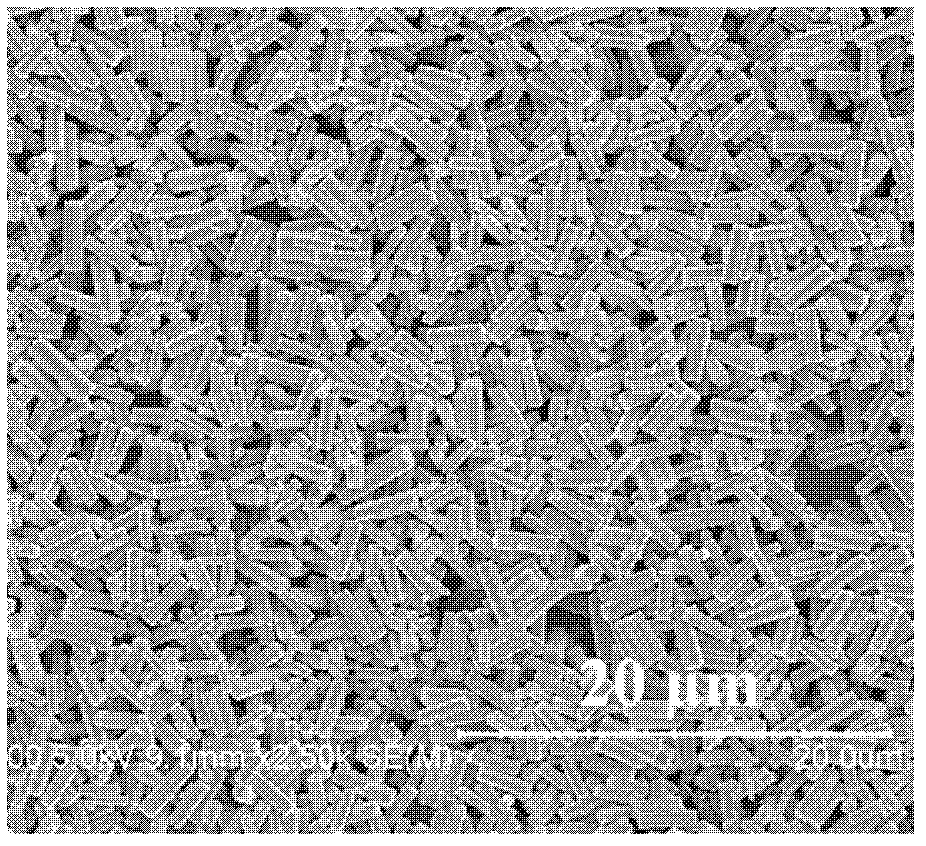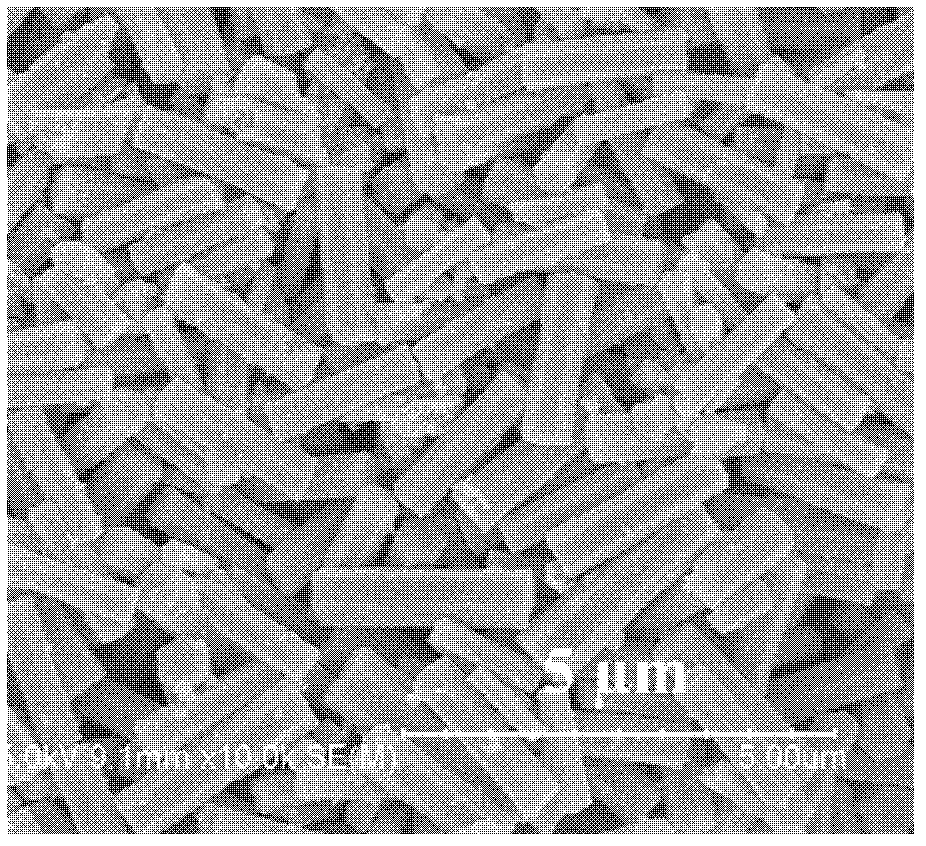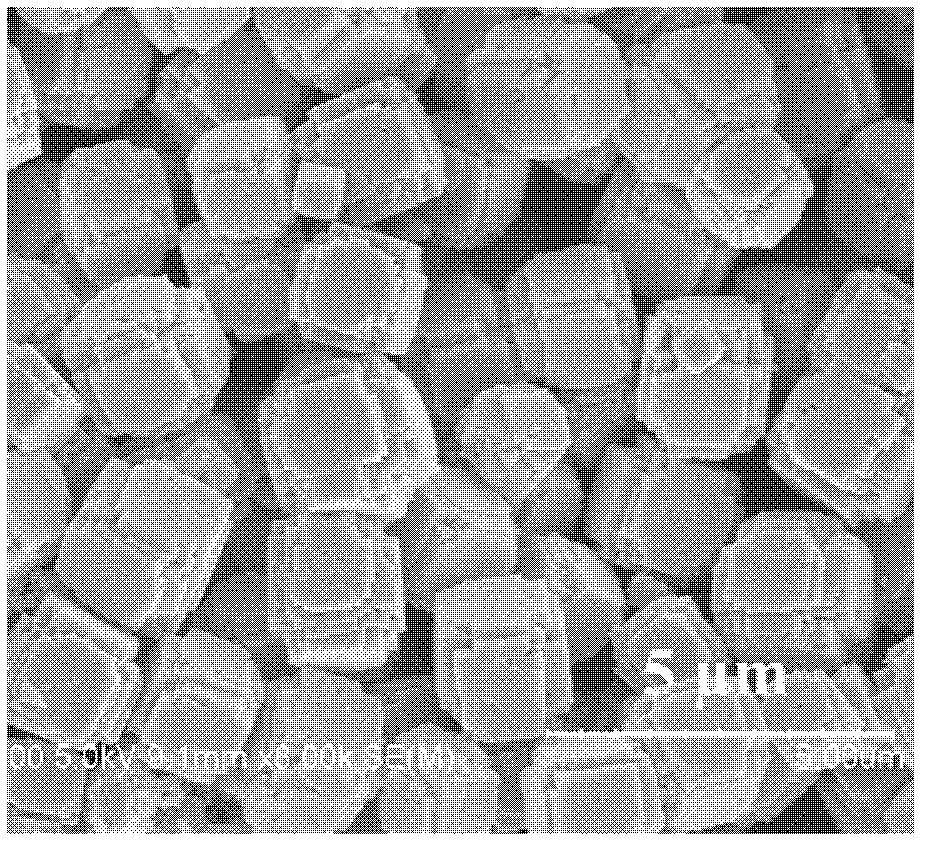Preparation method of porous nano tin dioxide
A nano-tin dioxide, sodium hydroxide technology, applied in tin oxide, nanotechnology and other directions, can solve the problem that the response sensitivity is not high, the gas sensing characteristics are restricted, and the regulation of the morphology and microstructure of tin dioxide nanocrystals cannot be realized. and other problems, to achieve the effect of high sensitive response, simple process and non-deformation
- Summary
- Abstract
- Description
- Claims
- Application Information
AI Technical Summary
Problems solved by technology
Method used
Image
Examples
Embodiment 1
[0046] Dissolve the sodium stannate raw material in water, adjust the pH value of the solution to 13.60 with 5.0M sodium hydroxide, prepare 30 milliliters of 0.5M sodium stannate solution, and add 15 milliliters of 1.0 M cupric chloride solution, obtains mixed liquor;
[0047] Standing and aging for 6 hours at a temperature of 80°C, a blue precipitate was obtained; the blue precipitate was filtered, washed, and dried to obtain a nanorod-shaped copper hydroxystannate precursor. The product characterization results are shown in the appendix figure 1 And attached Figure 5 as shown in b;
[0048] The nanorod-shaped copper hydroxystannate precursor was calcined at 700 °C for 2 h, washed with 1.0 M hydrochloric acid after cooling, filtered, washed, and dried to obtain white porous nanorod-shaped SnO 2 Nano powder, product characterization results are attached figure 2 , attached Figure 5 c. attached Figure 6 And attached Figure 8 shown.
Embodiment 2
[0050] Dissolve the tin tetrachloride pentahydrate raw material in water, adjust the pH value of the solution to 13.50 with 5.0M sodium hydroxide, prepare 30 milliliters of 0.5M sodium stannate solution, and add 15 milliliters of 1.0M cupric chloride solution, obtain mixed solution;
[0051] Standing and aging at a temperature of 60°C for 6 hours, a blue precipitate was obtained; the blue precipitate was filtered, washed, and dried to obtain a nanorod-shaped copper hydroxystannate precursor;
[0052] The nanorod-shaped copper hydroxystannate precursor was calcined at 720 °C for 2 h, washed with 1.5M nitric acid after cooling, filtered, washed, and dried to obtain white porous nanorod-shaped SnO 2 Nano powder.
Embodiment 3
[0054] Dissolve the tin tetrachloride pentahydrate raw material in water, adjust the pH value of the solution to 11.80 with 5.0M sodium hydroxide, prepare 30 ml of 0.5M sodium stannate solution, and add 15 milliliters of 1.0M cupric chloride solution, obtain mixed solution;
[0055] Standing and aging at 60°C for 8 hours, a light blue precipitate was obtained. The light blue precipitate was filtered, washed, and dried to obtain the precursor of copper hydroxystannate in the form of micron cubes. The product characterization results are shown in the attached image 3 And attached Figure 5 as shown in a;
[0056] The precursor of copper hydroxy stannate in micron cubic shape was roasted at 720°C for 2h, washed with 1.0M hydrochloric acid after cooling, filtered, washed and dried to obtain white porous micron cubic block SnO 2 Nano powder, product characterization results are attached Figure 4 , attached Figure 7 And attached Figure 9 shown.
PUM
| Property | Measurement | Unit |
|---|---|---|
| specific surface area | aaaaa | aaaaa |
| Sensitivity | aaaaa | aaaaa |
Abstract
Description
Claims
Application Information
 Login to View More
Login to View More - R&D
- Intellectual Property
- Life Sciences
- Materials
- Tech Scout
- Unparalleled Data Quality
- Higher Quality Content
- 60% Fewer Hallucinations
Browse by: Latest US Patents, China's latest patents, Technical Efficacy Thesaurus, Application Domain, Technology Topic, Popular Technical Reports.
© 2025 PatSnap. All rights reserved.Legal|Privacy policy|Modern Slavery Act Transparency Statement|Sitemap|About US| Contact US: help@patsnap.com



